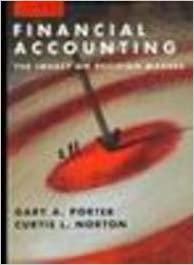Answered step by step
Verified Expert Solution
Question
1 Approved Answer
Accounting records for High Life Tire Ltd. yield the following data for the year ended December 31, 2017 (amounts in thousands): (Click the icon to







Accounting records for High Life Tire Ltd. yield the following data for the year ended December 31, 2017 (amounts in thousands): (Click the icon to view the accounting records.) Requirements 1. Journalize High Life Tire's inventory transactions for the year under (a) perpetual system and (b) the periodic system. Show all amounts in thousands. 2. What differences do you notice in the journal entries between the perpetual system and the periodic system? 3. Report ending inventory, sales, cost of goods sold, and gross profit on the appropriate financial statement (amounts in thousands), assuming the perpetual inventory system is used. Requirement 1a. Journalize High Life Tire's inventory transactions for the year under the perpetual system. (Record debits first, then credits. Explanations are not required. Show all amounts in thousands.) The first transaction is the purchase of inventory. Record the entry. Journal Entry Date Accounts December 31 Inventory Accounts Payable Debit Credit 1600||| 1600 The next transaction is the sale of inventory. Record the entry. (Do not yet record the cost related to the sale. We do this in the next journal entry.) Journal Entry Debit Credit Date December Accounts 31 Accounts Receivable Cash Sales Revenue The last entry is recording the cost of inventory. Record the entry. Journal Entry Date Accounts December 31 Cost of Goods Sold Inventory Debit Credit Requirement 1b. Journalize High Life Tire's inventory transactions for the year under the periodic system. (Record debits first, then credits. Explanations are not required. Show all amounts in thousands.) The first transaction is the purchase of inventory. Record the entry. Journal Entry Date Accounts December 31 Purchases Accounts Payable Debit Credit The last transaction is the sale of inventory. Record the entry. (Record debits first, then credits. Explanations are not required. Show all amounts in thousands.) Debit Credit Date December Journal Entry Accounts 31 Cash Accounts Receivable Sales Revenue Requirement 2. What differences do you notice in the journal entries between the perpetual system and the periodic system? Purchases of inventorythe perpetual system uses the inventory account while the periodic system uses a purchases account. Sale of inventorythe perpetual system records two journal entries, one to record the sales and one to update the inventory records while the periodic system only records the sales Requirement 3. Report ending inventory, sales, cost of goods sold, and gross profit on the appropriate financial statement (amounts in thousands), assuming the perpetual inventory system is used. (Show all amounts in thousands. Leave unused cells blank.) Report the appropriate account(s) on the balance sheet. Balance Sheet: Current assets: Inventory Report the appropriate account(s) on the income statement. Income Statement: Sales revenue Cost of goods sold Gross profit Accounting records for High Life Tire Ltd. yield the following data for the year ended December 31, 2017 (amounts in thousands): (Click the icon to view the accounting records.) Requirements 1. Journalize High Life Tire's inventory transactions for the year under (a) perpetual system and (b) the periodic system. Show all amounts in thousands. 2. What differences do you notice in the journal entries between the perpetual system and the periodic system? 3. Report ending inventory, sales, cost of goods sold, and gross profit on the appropriate financial statement (amounts in thousands), assuming the perpetual inventory system is used. Requirement 1a. Journalize High Life Tire's inventory transactions for the year under the perpetual system. (Record debits first, then credits. Explanations are not required. Show all amounts in thousands.) The first transaction is the purchase of inventory. Record the entry. Journal Entry Date Accounts December 31 Inventory Accounts Payable Debit Credit 1600||| 1600 The next transaction is the sale of inventory. Record the entry. (Do not yet record the cost related to the sale. We do this in the next journal entry.) Journal Entry Debit Credit Date December Accounts 31 Accounts Receivable Cash Sales Revenue The last entry is recording the cost of inventory. Record the entry. Journal Entry Date Accounts December 31 Cost of Goods Sold Inventory Debit Credit Requirement 1b. Journalize High Life Tire's inventory transactions for the year under the periodic system. (Record debits first, then credits. Explanations are not required. Show all amounts in thousands.) The first transaction is the purchase of inventory. Record the entry. Journal Entry Date Accounts December 31 Purchases Accounts Payable Debit Credit The last transaction is the sale of inventory. Record the entry. (Record debits first, then credits. Explanations are not required. Show all amounts in thousands.) Debit Credit Date December Journal Entry Accounts 31 Cash Accounts Receivable Sales Revenue Requirement 2. What differences do you notice in the journal entries between the perpetual system and the periodic system? Purchases of inventorythe perpetual system uses the inventory account while the periodic system uses a purchases account. Sale of inventorythe perpetual system records two journal entries, one to record the sales and one to update the inventory records while the periodic system only records the sales Requirement 3. Report ending inventory, sales, cost of goods sold, and gross profit on the appropriate financial statement (amounts in thousands), assuming the perpetual inventory system is used. (Show all amounts in thousands. Leave unused cells blank.) Report the appropriate account(s) on the balance sheet. Balance Sheet: Current assets: Inventory Report the appropriate account(s) on the income statement. Income Statement: Sales revenue Cost of goods sold Gross profit
Step by Step Solution
There are 3 Steps involved in it
Step: 1

Get Instant Access to Expert-Tailored Solutions
See step-by-step solutions with expert insights and AI powered tools for academic success
Step: 2

Step: 3

Ace Your Homework with AI
Get the answers you need in no time with our AI-driven, step-by-step assistance
Get Started


